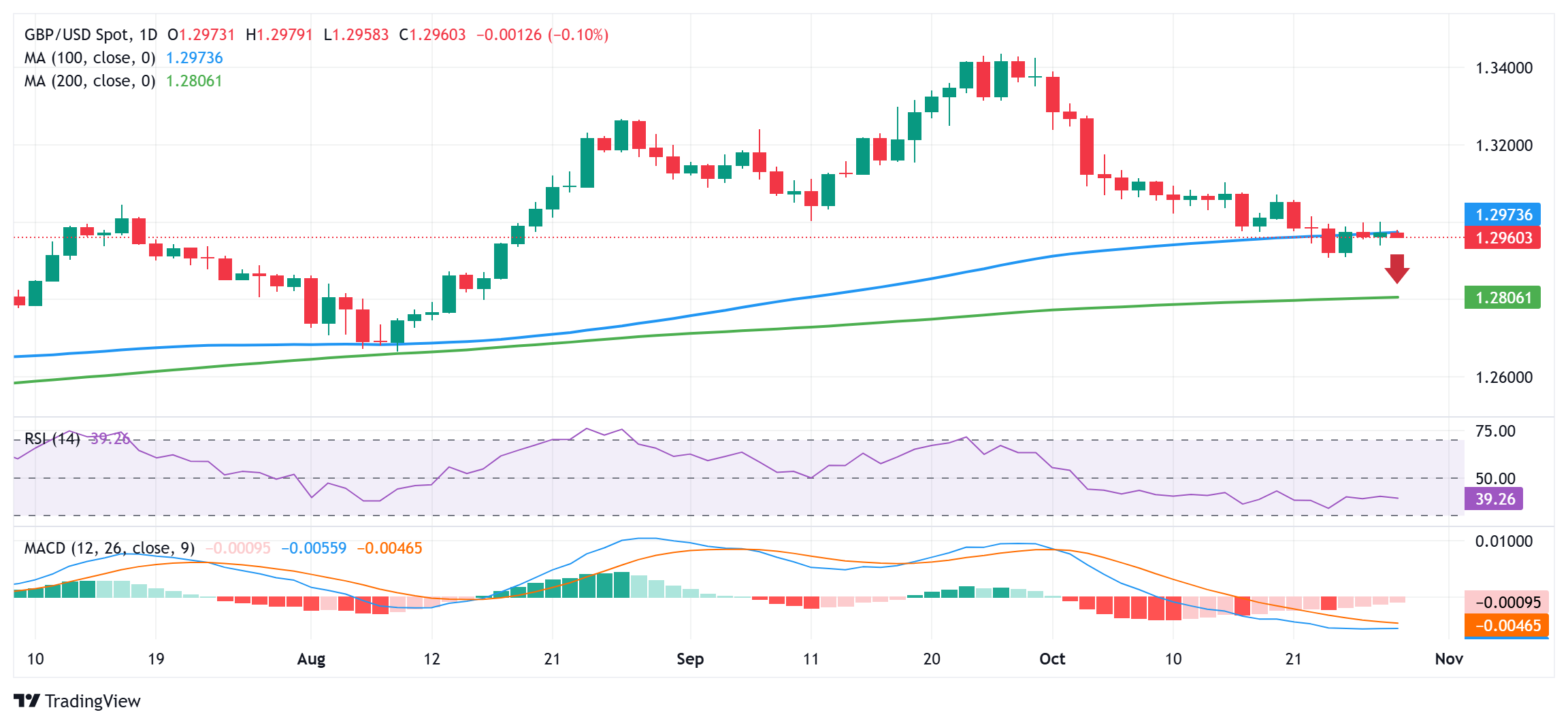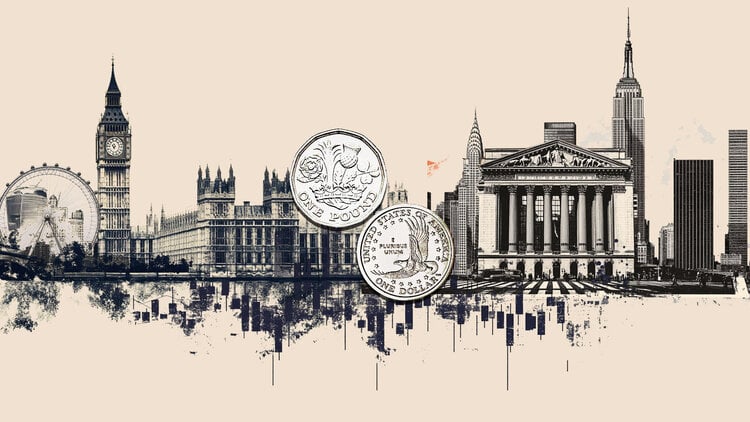- GBP/USD encounters fresh selling on Tuesday and looks vulnerable to falling further.
- Expectations of fewer Fed rate cuts revive demand for the USD and put pressure on the pair.
- The technical setup favors the bears and supports the prospects of a new bearish move.
The GBP/USD pair attracts new sellers after the good two-way price movement of the previous day and slides towards the mid-1.2900 zone during the Asian session on Tuesday. However, spot prices remain above the lowest level since August 16 touched last week and remain at the mercy of the US Dollar (USD) price dynamics.
Expectations of less aggressive policy easing from the Federal Reserve (Fed) help the USD halt its overnight pullback from a three-month high and drag the GBP/USD pair lower. Furthermore, rising expectations of further rate cuts by the Bank of England (BoE) in November and December suggest that the path of least resistance for spot prices remains downwards.
From a technical perspective, recent repeated failures near the 1.3000 psychological level and a break below the 100-day SMA validate the near-term negative outlook. Furthermore, the oscillators on the daily chart remain deep in negative territory and are still far from being in the oversold zone. Therefore, a subsequent decline towards the 1.2900 level, or the monthly low, seems a distinct possibility.
Some follow-through selling will be seen as a new trigger for the bears and pave the way for an extension of the downtrend from the 1.3435 region, or the highest level since February 2022 touched last month. The GBP/USD pair could then aim to test the very important 200-day SMA, currently situated near the round 1.2800 level, with some intermediate support near the 1.2860 region.
On the upside, the 1.3000 level now appears to have emerged as an immediate strong barrier, above which spot prices could rise to the 1.3050 supply zone. Sustained strength beyond the latter could trigger a short covering move and lift the GBP/USD pair beyond the 1.3100 round level, towards the 1.3115-1.3120 resistance zone. Some continuation buying will negate the negative outlook and shift the bias in favor of the bulls.
GBP/USD daily chart
The British Pound FAQs
The British Pound (GBP) is the oldest currency in the world (AD 886) and the official currency of the United Kingdom. It is the fourth most traded foreign exchange (FX) unit in the world, accounting for 12% of all transactions, averaging $630 billion a day, according to 2022 data. Its key trading pairs are GBP/ USD, which represents 11% of FX, GBP/JPY (3%) and EUR/GBP (2%). The British Pound is issued by the Bank of England (BoE).
The most important factor influencing the value of the Pound Sterling is the monetary policy decided by the Bank of England. The Bank of England bases its decisions on whether it has achieved its main objective of “price stability” – a constant inflation rate of around 2%. Its main tool to achieve this is the adjustment of interest rates. When inflation is too high, the Bank of England will try to control it by raising interest rates, making it more expensive for people and businesses to access credit. This is generally positive for sterling, as higher interest rates make the UK a more attractive place for global investors to invest their money. When inflation falls too much it is a sign that economic growth is slowing. In this scenario, the Bank of England will consider lowering interest rates to make credit cheaper, so that companies will take on more debt to invest in projects that generate growth.
The data released measures the health of the economy and may affect the value of the pound. Indicators such as GDP, manufacturing and services PMIs and employment can influence the direction of the Pound.
Another important data that is published and affects the British Pound is the trade balance. This indicator measures the difference between what a country earns from its exports and what it spends on imports during a given period. If a country produces highly in-demand export products, its currency will benefit exclusively from the additional demand created by foreign buyers seeking to purchase those goods. Therefore, a positive net trade balance strengthens a currency and vice versa in the case of a negative balance.
Source: Fx Street
I am Joshua Winder, a senior-level journalist and editor at World Stock Market. I specialize in covering news related to the stock market and economic trends. With more than 8 years of experience in this field, I have become an expert in financial reporting.








